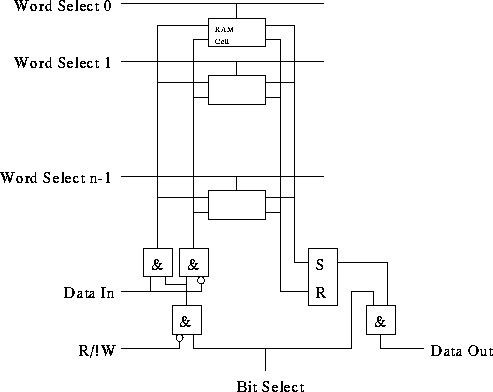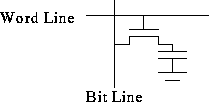
Goal: cell should be as small as possible, to increase storage density.
Think about the AND gates on the output side as tri-state buffers --- transmission gates.

 bit-slice RAM cells. Adding 2-to-4
decoders, how would a
bit-slice RAM cells. Adding 2-to-4
decoders, how would a  RAM look? A
RAM look? A  RAM?
RAM?
Tom Kelliher, CS 220
Dec. 3, 2001
Course evaluation at end of class.
Toolboxes due Friday. Counter due Monday.
Introduction to memory.
Review for final.
The number of columns may not have anything to do with bits/word --- many RAMs have 1 bit/word but are 2-D internally.

Goal: cell should be as small as possible, to increase storage density.
Think about the AND gates on the output side as tri-state buffers --- transmission gates.

 bit-slice RAM cells. Adding 2-to-4
decoders, how would a
bit-slice RAM cells. Adding 2-to-4
decoders, how would a  RAM look? A
RAM look? A  RAM?
RAM?
